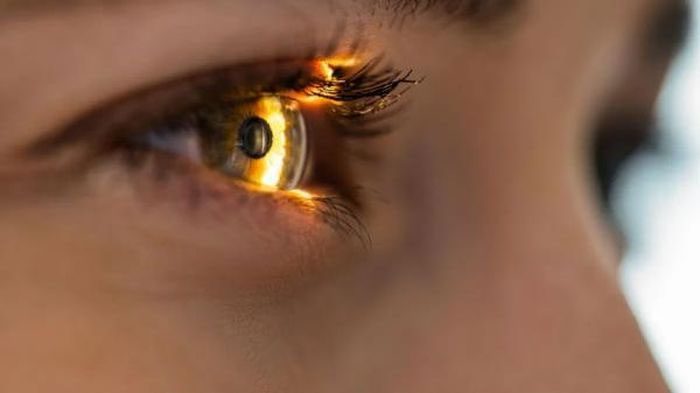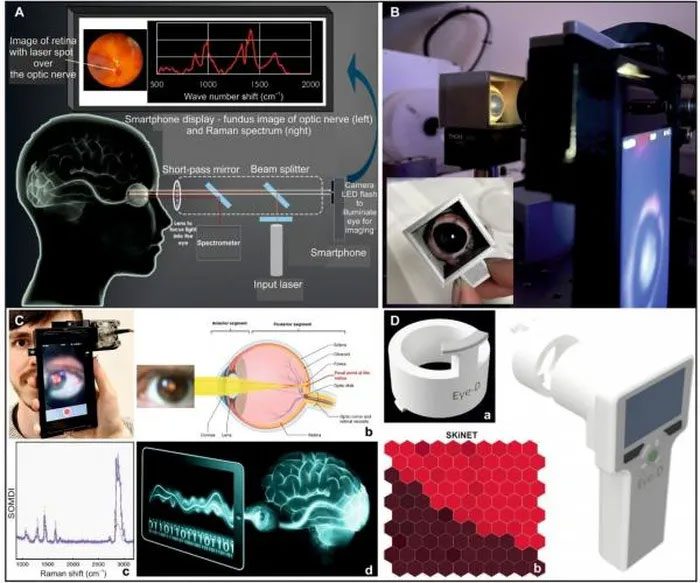It is hoped that this will become a useful tool for first responders in treating victims and patients with traumatic brain injuries. The first hour is crucial for detecting head injuries, and early assessment can be life-saving. Thanks to a new handheld device introduced, medical professionals can now act quickly and effectively to assess potential brain injuries.
How Does EyeD Work?
A research team at the University of Birmingham in the UK has developed a new device that diagnoses brain injuries by scanning the eyes. The device is named EyeD and is a handheld tool that combines a smartphone, laser beam, and spectrometer to measure molecular changes in the eye related to brain injuries.
Traumatic brain injuries such as concussions can have serious and long-lasting consequences if not treated promptly. However, symptoms of brain injuries may not appear immediately after an accident, and diagnosis often requires complex imaging techniques such as CT scans and MRIs, which are only available in hospitals. This means that the critical first hour after a traumatic brain injury, known as the “golden hour,” can be wasted while waiting for a diagnosis.

Eye scanning image.
Scientific Advancements
To overcome this challenge, the research team at the University of Birmingham designed EyeD, a device capable of detecting brain injuries within minutes by analyzing the eyes. The eyes are connected to the brain by the optic nerve, and the back of the eye contains retinal nerves, similar to brain tissue. Therefore, any changes in the brain due to injury can also affect the eyes and vice versa.
EyeD works by projecting a safe laser beam into the back of the eye and capturing the light reflected by the eye tissue. The reflected light contains information about the chemical composition of the eye—such as levels of lipids and proteins, which are also biomarkers of brain injury. The device then utilizes the smartphone camera and spectrometer to analyze the reflected light and feed the data into a neural network program to classify cases as either brain injury or non-brain injury.

EyeD technology is designed to facilitate quick TBI care diagnosis.
Initial Testing
The research team tested EyeD on artificial eye models and post-mortem pig eye tissues and found that the device could accurately detect brain injuries in both cases. This device is lightweight, portable, and easy to use. First responders can easily utilize the tool at the accident scene to diagnose brain injuries and initiate prompt treatment.
The study published in the journal Science Advances serves as proof of concept for EyeD, and the research team plans to conduct further studies to assess the device’s performance on human subjects. If successful, EyeD promises to revolutionize the diagnosis and management of brain injuries, saving lives and preventing disabilities.
Traumatic brain injury (TBI), a leading cause of morbidity and mortality worldwide, is challenging to diagnose at the time of care because patients often do not exhibit clinical symptoms. There is an urgent need for rapid point-of-care diagnostics to enable timely intervention. The research team has developed a technology that quickly captures the molecular fingerprint of TBI biochemistry to safely measure brain injury indicators through the eyes, paving the way for a non-invasive point-of-care neurodiagnostic method using Raman spectroscopy and retinal imaging.
Detection of endogenous neural signs at the back of pig eyes shows an enhancement of high-frequency wavebands, clearly distinguishing TBI from healthy groups, classified through an artificial neural network algorithm for automatic data interpretation. Clinically, this translates to reduced reliance on specialists, markedly improving diagnosis speed. Designed as a cost-effective handheld technology, the tool allows clinicians to quickly assess TBIs at the point of care and identify long-term biochemical changes in the brain in acute or chronic neurological conditions.



















































